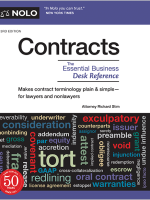Every individual should have the autonomy to make decisions for themselves. Unfortunately, situations sometimes occur where that is not the case. When someone threatens another person with the intention of getting them to do something they normally wouldn’t have done, it can possibly be considered “duress.”
While there are different definitions to exactly what duress encompasses (making it important to consult a legal professional in your specific area), understanding the basics of duress can be important to recognizing it. Let’s examine what duress is and how to prove it.
What is Duress?
 As stated above, the basic definition of duress is unlawfully threatening another person with the intention of getting them to do something they normally wouldn’t have done. That is, however, a very broad definition. Duress can occur in several different ways.
As stated above, the basic definition of duress is unlawfully threatening another person with the intention of getting them to do something they normally wouldn’t have done. That is, however, a very broad definition. Duress can occur in several different ways.
Duress in Contract Law
The most common occurrences of duress happen in situations involving contracts. If two parties are involved in some sort of contract, and one attempts to force one party to sign the contract — even when they don’t find the terms ideal — through threats, it could be considered duress.
Duress in contract law is commonly broken up into two separate types: physical duress and economical duress.
Physical Duress
When a person receives threats of physical violence if they don’t sign a contract, it can be considered physical duress. Because one requirement of contracts is that all parties involved enter into the agreement in mutual consent, the act of threatening another person to sign a contract can void the agreement.
As an example, Mike and John are working on a contract in which John would sell his share of the M&J Company to Mike. John is not happy with the terms of the contract and is hesitating, so Mike threatens to murder John if he doesn’t sign on the dotted line. Fearing for his life, John signs the contract. In this example, John would be signing the contract under duress and, if proven in court, would not be held to the terms due to the necessity of contracts being entered into mutually (as stated before).
Economical Duress
 Economical duress involves financial elements of a contract rather than physical threats. Situations in which economic duress may come into play include:
Economical duress involves financial elements of a contract rather than physical threats. Situations in which economic duress may come into play include:
- A contract is severely disadvantageous to one party, but that same party will be financially ruined fi they don’t sign it
- One party knows the other party needs contracted goods to keep their business afloat and refuses to provide the goods unless the disadvantaged party agrees to pay 30% more than the originally agreed upon price
- One party knows the other is struggling financially and uses that knowledge to get a reduced payment under an existing contract
Duress in Criminal Law
Claiming duress in a criminal law context is used a defense. A defendant will claim they committed the crime in question because they were forced into doing it by another party through violence or threats violence. Much like signing a contract under duress, these threats ostensibly would cause someone to act in a way they would’ve otherwise not.
Elements of duress in a criminal case typically include:
- Danger of immediate harm or death
- Fear that harm would be carried out upon the defendant
- No other action besides committing the crime would protect the person from that violence being inflicted
How to Prove Duress as a Defense
 Specifically in contract law, duress often comes into play when a party is accused of breach of contract. When such a charge is brought against the person, they could claim the only reason they signed the contract in the first place was because of duress (whether physical or economical). Proving duress, however, is often difficult because there is rarely concrete evidence of the crime (such as written correspondence).
Specifically in contract law, duress often comes into play when a party is accused of breach of contract. When such a charge is brought against the person, they could claim the only reason they signed the contract in the first place was because of duress (whether physical or economical). Proving duress, however, is often difficult because there is rarely concrete evidence of the crime (such as written correspondence).
To properly prove duress in contract cases, certain elements are usually required:
- Proof of a continuous legal contract between parties (or a new contract that was entered into)
- A defendant who threatened to end the contract if the plaintiff didn’t do what the defendant wanted
- Because of these threats, the plaintiff felt pressured to sign the contract
- Because the plaintiff feels like there is no alternative, the contract is signed
Duress Vs. Coercion
Duress and coercion are often used interchangeably, but they are individual elements of a situation. Duress refers the to the mindset of a person who is being forced into a certain action while coercion is the actions made by the other party (such as physical or economical threats).


